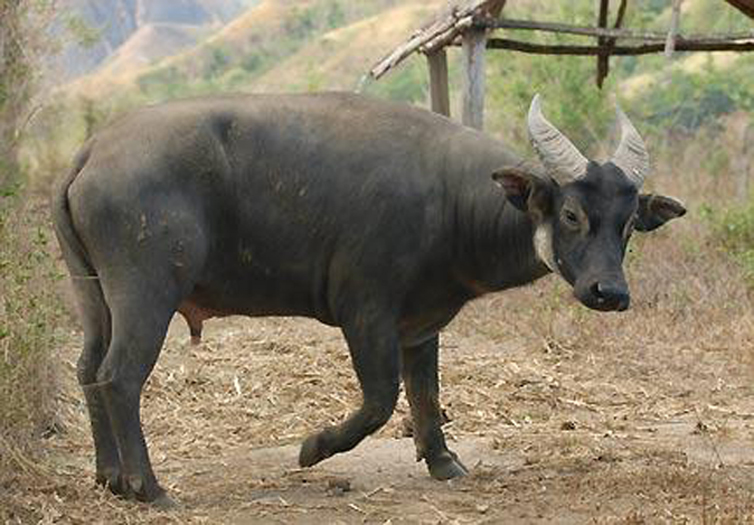Welcome Kabayan!
Feel free to browse around for photos, stories and information all about Naujan.
Kanlungan sa Naujan
Categories
-
Recent Posts
Recent Comments
- Vener EStorque Albufera on Naujan Academy
- Fr Matthew Gibson on San Nicolas de Tolentino, Patron Saint of Naujan
- rhealyngerpacio on The 70 Barangays of Naujan
- Arvin Parin on Inarawan National High School (INHS)
- Aiko Passion Mendoza on Municipal Government Offices
-
Like Us on FB
DISCLAIMER
Naujan.com, unless otherwise noted, do not own the pictures posted in this site. Credits are due to our fellow Naujeños who continue to share their stories, information, and photos to our kababayans everywhere.
-
Background photos by Marlon T. Abuan, Raymund Valenton, JL Reyes, Mon Robles, Norman Belino, Jay Feudo Hernandez and Dr. RM Del Mundo.

Dec
3
2011
 0
0The Mindoro Dwarf Buffalo (Bubalus Mindorensis), also often called Tamaraw qualifies for inclusion in Critically Endangered under Criteria, given the number of mature individuals is estimated to be less than 250, with a continuing declined estimated at over 25% over the next three generations (generation length estimated at 10 years). In addition, over 90% of individuals are presumed to be in one sub-population, Mount Iglit-Baco National Park.
It is endemic to the island of Mindoro, where it was formerly widespread across the island. However, the current range is estimated to cover less than 300 sq.km., in only two or three areas: Mount Iglit-Baco National Park (within the Iglit mountain range), Mount Aruyan/Sablayan, and Mount Calavite Tamaraw Preserve.
Based on recent surveys, the minimum total population is estimated at around 300 individuals with 60 to 70% of these mature individuals. However, earlier field data suggested that the percentage of mature individuals was 35 to 59%.
The population on Mount Iglit-Baco, as of April 2005 was estimated to number approximately 269 individuals (the actual number might be slightly higher).
The population on Mount Calavite in 2004 had an estimated 15 individuals based on fecal matter and animal tracks; there has been only one confirmed sighting. The population in Aruyan has an estimated 15 to 20 individuals, with six confirmed recent sightings. The population size is therefore around 300 animals, and the number of mature individuals is 105-210, depending on the percentage of mature animals in the overall population.
An estimated continuing decline of 25% over the next three generations (approximately 30 years) does not seem unreasonable given that the number of sub-populations reportedly declined from five or six to three between 1990 and 2006.
Habitat
The Tamaraws were found across the whole of Mindoro from sea level to the high peaks, inhabiting open grassland or forest glades, thick bamboo-jungle, marshy river valleys, and low to mid-elevation forests. The species is currently confined to a few remote areas, and is most often recorded in secondary forest and mixed forest/grassland.
They are largely solitary, although females occur with offspring. Males and females occasionally associate temporarily throughout the year, which is similar to other bovines species, such as African buffalo, banteng and gaur. The solitary nature of the species is probably an adaptation to forest habitats, where large groups would prove to be a hindrance. Tamaraws feed primarily on grasses, as well as young bamboo shoots, in open grasslands, resting within tall grasses or dense forest. Although formerly diurnal, they have become largely nocturnal due to human encroachment and disturbance.
Threats
The main current threat to the Tamaraw is habitat loss due to farming by resettled and local people, with a high human population growth rates in and around its remaining habitat. In some areas, fires set for agriculture are a threat to the species’ habitat. Cattle ranching and farming activities pose a number of threats, including the risk of diseases spreading to the Tamaraw from livestock and burning of pastures leading to a reduced number of palatable grass species.
Historically, Tamaraws were hunted for both subsistence and sport, which led to a period of drastic decline in numbers of individuals and populations. Hunting was carefully regulated prior to World War II, but since then a growing human population, logging operations, ranching, and widespread availability of firearms on Mindoro have caused a dramatic decline in numbers.
Since the 1980s, sport hunting has reduced due to a decline in the Tamaraw population, closure of nearby ranches, and more intensive patrolling and awareness activities since the establishment of the protected area. International trade in this species or its derivatives has not been reported. Although protected by law, the illegal capture and killing of this species continues.
Conservation Efforts
The Tamaraw is listed on CITES Appendix I. Tamaraw receive total protection under Philippine law. The largest of the three known sub-populations occurs in Mount Iglit-Baco National Park. A small number of Tamaraw are held in captivity in the Philippines, but the captive breeding program has had no success. Of the 21 individuals captured around 1982, there were nine individuals remaining in 1997.
As of 2006, two individuals remained, one of which is from the original population and one which was bred in captivity, and there are no further plans for captive breeding. The original captive breeding program consisted of placing the animals in a semi-natural “gene pool” on Mindoro, but these animals were not intensively managed, nor were the husbandry techniques focused on building a large captive population.
Required research for this species includes an island wide population survey to determine if there are any additional extant populations. There is also a need for improved habitat conservation through effective management. In addition, the feasibility and need for a new captive breeding program should be assessed



